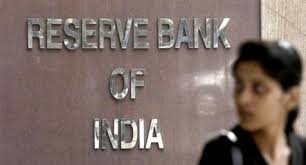RBI makes unconventional rate cut in bid to spur growth

The Reserve Bank of India (RBI) on Wednesday cut its benchmark interest rates for a fourth straight meeting, and by slightly more than expected, highlighting the depth of its concern about economic growth that’s slid to its slowest pace in nearly five years.
The six-member monetary policy committee (MPC) cut the repo rate INREPO=ECI by an unconventional 35 basis points to 5.40%, just above a 25 basis point cut predicted by 80% of the 66 analysts polled by Reuters last month.
The RBI’s move came hours after the New Zealand central bank’s decision on Wednesday to cut its rates by a steep 50 basis points, while flagging the possibility of going nuclear and taking rates below zero, a radical shift that drove the Kiwi dollar NZD=D3 to three-and-a-half year lows.
“Addressing growth concerns by boosting aggregate demand, especially private investment, assumes the highest priority at this juncture,” the RBI’s MPC said in its statement, noting that the inflation outlook remains benign for now despite the recent rate cuts.
Asia’s third largest economy grew at a significantly slower-than-expected 5.8% annual pace in the January-March quarter. And most analysts expect data due later this month to show that growth in April-June faltered even further.
SIGNAL OF CONCERN
The 35 basis point rate cut is “a signal that the Reserve Bank of India’s MPC is quite concerned with the growth outlook,” said Suvodeep Rakshit, a senior economist with Kotak Institutional Equities in Mumbai.
Indeed, the RBI lowered its economic growth forecast to 6.9% from 7% for the current fiscal year, and said it sees inflation remaining inside its target range over a 12-month horizon.
Indian Finance Minister Nirmala Sitharaman, in a newspaper interview last week, expressed that she would like to see a “significant” reduction in RBI policy rates, in order to bolster a weak economy.
Asked about the unconventional rate cut size at a press briefing, RBI Governor Shaktikanta Das defended the move, saying the MPC viewed a standard 25 bps cut as being “inadequate in view of the evolving global and domestic macro-economic” conditions, while a 50 bps cut was seen as potentially “excessive”, given past RBI actions.
Earlier this week, Sitharaman said the government plans to take steps to improve the state of the economy “fairly quickly” after getting inputs from business leaders.
Das said the recent rate cuts in tandem with anticipated government moves should lift sluggish economic growth.
MARKET REACTION MUTED
Markets were little changed as the RBI policy decision was largely in-line with expectations. The 10-year benchmark bond yield IN072629G=CC rose to 6.38% from 6.33% before the policy announcement, while the rupee INR=D4 strengthened slightly to 70.80 versus the dollar.
Losses for India’s benchmark NSE Index .NSEI increased after the rate announcement, and it was down 0.4% for the day at 0915 GMT.
Amar Ambani, head of research at Yes Bank, said the market’s reaction was largely muted as equity markets had already priced in a potential 50 basis point cut.
Four MPC members voted for the 35 basis points cut, while two voted for a 25 basis point cut, the RBI said. All members voted to keep the policy stance at “accommodative”.
The MPC also cut the reverse repo rate INRREP=ECI to 5.15%.
With Wednesday’s move, the RBI has cut the repo rate by 110 basis points this year. However, analysts say the real challenge remains getting India’s banks to pass rate cuts to borrowers.
“The real issues are improving monetary policy transmission and reviving the non-banking finance companies sector; the policy does not provide any new measures or even perspectives on these areas,” said Sujan Hajra, chief economist at Anand Rathi Securities in Mumbai.




